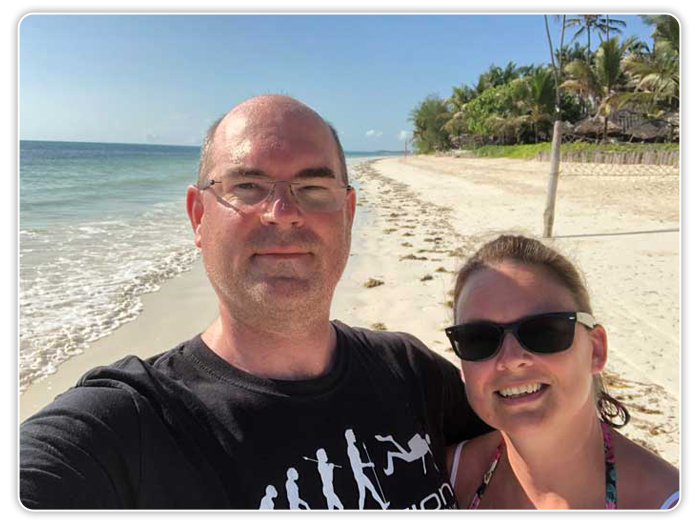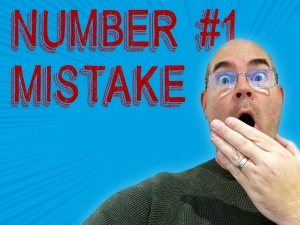In a previous article titled ‘The Freemium Business Model: Using The Power Of FREE To Make Money’ I talk a lot about how to make money giving away a ton of quality information.
The system is called the Freemium Business Model and it is incredibly powerful.
However…
There is something that you need to remember, it is a vital part of the Freemium model.
You should always have one or several ‘big backend’ offers.
Whenever you give anything away for free, you should have something ready to sell to those who sign up.
A lot of people have this down to a tee, they have one or several products ready in their sales funnel that are priced between $7 and $97… but most people don’t have a premium-priced product to sell.
This is a HUGE mistake!
You know that saying all internet marketing gurus like to use… the one about ‘leaving money on the table’?
Yeah well, that is exactly what is happening here.
It is a big mistake to not have a follow-up product or series of products priced at $497, $997, and $1,997… and even as high as $9,997.
I don’t know if people are fearful of creating premium-priced offers, afraid that people won’t buy them or that they have nothing to offer for a premium price, or whether they just don’t realize how much money they are missing out on.
But rest assured, those who don’t offer a premium-priced offer on the back end are missing out on a HUGE AMOUNT of MONEY!
There will always be a handful of people who will want to buy more from you and they will happily pay more than most people.
It doesn’t take much to make a product that you can sell for $497 or more.
You simply focus more on whatever it is your Front End products (whatever it was your customer purchased from you first)… Or you focus more on one specific area that customers want to know more about… Or perhaps even create an automated solution, a toolkit, a package or resources… or similar.
This isn’t to say that you should make ‘any old product’ just because you know that a handful of people will pay more than others. No, far from it, you still need to over-deliver high-quality content and real life value for what they pay in return.
All I am saying is, I simply don’t want you to miss out on the extra opportunity that is sitting in your customer’s pockets and your ability to help them achieve (whatever it is they’re trying to do) easier / faster / using automation / with the right tools etc…
Put it this way, if they don’t spend it with you, they will spend it with someone else and it’s your duty to help your customers in any way you can.
You see, they have the money and they want to invest it. The question is, do you want them to spend it with you (or one of your competitors).
To help you understand more I am going to give you a couple of analogies and factual stories to highlight my point.
Starting with when it comes to spending money, there are two different kinds of people…
The Onlies vs The Boasties
There is a story about a market trader who had two identical vases for sale on his market stall. One was priced $5, the other was priced at $500.
When asked why both vases were priced so differently when they were identical, the market trader said:
“There are those who will buy the vase and happily tell their friends that it ONLY cost $5, and then there are those who will proudly BOAST to their friends that it cost $500!”
Some people love to get a bargain; they love to get more for less whereas others are happy to pay over the odds to own something to simply own it. Think of art and antique collectors.
Paying over the odds to buy something is seen as a sign of wealth and affluence.
Okay, that is not what is happening here particularly.
The 80/20 Principle
You are not making products to simply sell to those who want to be seen spending loads of money; you want to sell to people who want to buy specific help, information and services and can afford it.
It falls under the 80/20 rule known as the Pareto Principle, named after the mathematician who discovered it.
The 80-20 rule works like this:
80% of vehicles in the USA use 20% of the country’s road network.
80% of the population will be employees.
20% of professional sports stars earn more than the other 80%.
20% of that 20% of highly paid professional sports stars will earn more than the rest.
80% of work done at a company is done by 20% of the staff.
80% of a business’s income comes from 20% of its customers.
20% of a business’s customers will buy more than one product.
It’s a principle of nature, a universal law if you like.
It’s not set in stone at 80/20, for some things it may be 75/25 or 70/30, but for most things in nature and society, there is an 80/20 order.
In his book 80/20 Sales And Marketing: The Definitive Guide To Working Less and Making More, Perry Marshall shares the story about how Starbucks in the USA used to sell different priced coffee machines on their website.
The coffee machines all made a decent cup of coffee. The taste and quality may vary from machine to machine by a few percentages only, but the prices were hugely different.
Why sell an incredibly expensive coffee machine when it doesn’t do anything different from the cheaper machines?
The reason for this price difference and why Starbucks listed an expensive coffee-making machine that did exactly the same as the cheaper machines is that some people want to pay more.
Those people are in the 20% and it includes people who want to BOAST about that purchase.
“Oh yes, I bought this super deluxe coffee-making machine from Starbucks, it’s Italian you know, built with cold pressed stainless steel which gives the coffee that authentic aroma of Rome. It cost $2,000 and not a penny less.”
More Profit For Less Work
Selling a coffee machine that costs $2,000 gives the company more profit and requires less work to deliver to the customer than selling ten coffee machines priced at $200.
With that in mind, you should also be targeting the 20% of people who not only want to buy more specific information, help and advice from you, but they can also afford to pay a premium price for it… and are happy to pay it too.
Selling an eBook at $97 is great; you can make a lot of money from it if you get a lot of buyers, but what if you were to offer those customers a $497 membership product and a $9,997 private coaching and mentorship as well?
The 80/20 rule states that around 20% of the people who buy your $97 eBook will want to buy more from you. If 1,000 people buy your eBook, then you have roughly 200 people who want to buy another product.
If 200 people who bought your eBook went on to purchase your $497 product then you have made an extra $99,400.
Out of that 200 people, a further 20%, 40, may go on to purchase your $9,997 product giving you a cool $1,599,520.
Okay, that is all hypothetical, but the 80/20 rule is an actual rule that businesses use to increase their profits.
A successful entrepreneur knows that instead of trying to sell one product to thousands of people and to continuously keep trying to find new customers, they create other products which they can sell to that 20%.
They increase their prices and sell to the 20% of the 20% of the 20%.
There are other factors at play such as the quality of your products, their price, and the type of customers you have.
If you sell an item for $5 to thousands of people then try and sell them a $9,997 product, the 20% who can afford it may not want to buy with it being such a price leap.
The principle states that they can but it is more likely to go up in increments, which is why you need to offer a range of products in an ascending price range.
Still, even if you did sell a $5 product to thousands of people and just one person bought your $9,997 product… it was worth making it because you have now earned an extra $9,997 in one go.
It would require you to sell another 2,000 copies of your $5 product to make the $9,997 you have made from selling that one product.
It could take a while to sell an extra 2,000 copies.
You only need one person to make a big change to your products.
A handful can catapult your income levels.
See what is meant when they say you are leaving huge amounts of money on the table?
Earn More – Supply Less
Oddly as it sounds, the products which generally cost the most to buy often require less content. Very often they only need a commitment from you which requires little work.
For example: a $497 product could include an eBook, a series of video training, a few cheat sheets, and a selection of audio recordings… but the $9,997 product could require nothing more than one live one-to-one online chat each month or a live meeting at a specific venue with other customers as part of a mastermind mentoring group.
You don’t have to create any ‘content’ in the traditional sense. Because your time and knowledge is the content.
As a mentor, you help the purchaser to become successful by simply talking them through what they need to do next and reviewing what they have achieved so far.
You can look at where they went wrong and tell them what they need to do to put it right and what their next steps are. You give them the personal attention they cannot get from an eBook or course.
If you have successfully achieved the thing customers want to achieve, they – some of them – will happily pay you to mentor them to achieve the same results and so it would be a HUGE mistake to not have one or several premium-priced products for your customers to invest in.
When planning out the products in your sales funnel make sure that you include several more expensive premium-priced products.
Not only do you now know that 20% of customers want to buy higher-priced products, you know that if you don’t supply them, they are likely to go and spend their money with someone else… and quite frankly, the money is better off in your pocket than it is in someone else’s… don’t you agree?
If you would like to discover my own proven method for creating Premium Priced Products (that you can sell for anywhere from $97 all the way up to $997+) then be sure to check out the following website:
www.PremiumProductProfitFormula.com

You Could Be Just One Simple Letter Away From The End Of All Your Financial Worries...
... And If You Enter Your Mailing Address Below I Can Show You Exactly How To Write It!
Privacy Policy: We value your privacy. You can unsubscribe from receiving future emails with 1 click at any time.



